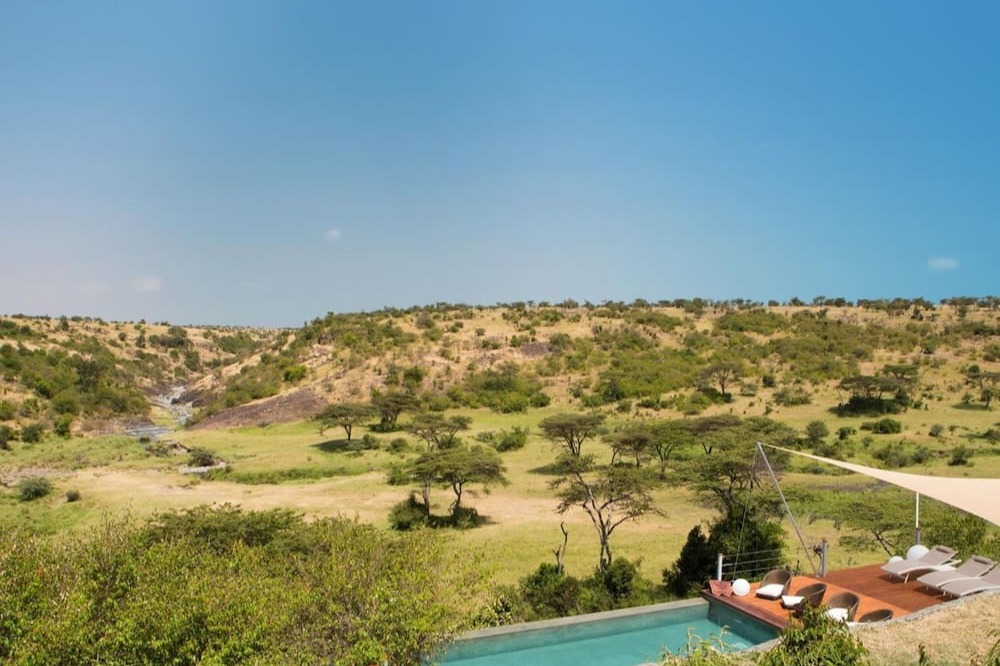
Image courtesy of Mahali Mzuri
Kenya is physically beautiful, filled with ancient volcanoes, vast valleys, stunning lakes and an abundance of wildlife. Time slows down here, perhaps due to the area’s mere ancientness (it’s believed that humans’ earliest forebears arose from eastern Africa). And then there are the people: exceptionally warm, kind, hospitable and proud of their beautiful home.
You’ll likely want to return to Kenya several times. Not to worry; you won’t run out of things to see, or experiences to relish. To get the most out of your trip, connect with me. I’ll help you narrow down your options and matchmake you to the regions, activities and lodges that fit your travel style and budget.
Need to know:
Airports: Jomo Kenyatta International Airport (NBO), Moi International Airport (MBA), Eldoret International Airport (EDL), Kisumu International Airport (KIS), Wilson Airport (WIL)
Currency: Kenyan Shilling (KES)
Transportation: Most travelers use a driver and a guide to get around. And you’ll likely travel from lodge to lodge via a small plane. During safari, you’ll hop in your lodge’s safari vehicle of choice.
Best time to visit: There is no bad time to visit Kenya, but your preferences will largely dictate when you decide to go. The dry season runs from June to October, and is best for spotting wildlife and seeing the Great Migration. It’s nice and sunny from January to March, and from July to October, which is ideal for beach holidays along the coast. The wet season spans from November to April; it’s the best time for bird watching, as migratory birds arrive from Europe and North Africa. If you want to climb Mount Kenya, stick to January and February, or August and September, when the sky is clearer and there’s less rain.
Ideal length of stay: Up to 14 days are ideal for a mix of city tours in Nairobi and safaris in Kenya’s various nature reserves, like Maasai Mara, Amboseli, Samburu and Tsavo.
Signature dishes: ugali (maize-flour porridge), nyama choma (grilled meat), sukuma wiki (sautéed collard greens), githeri (mixture of maize and beans), chapati (flatbread), samosa (spiced filled pastry), matoke (stewed plantains), irio (mashed potatoes and peas), pilau (spiced rice), maharagwe (coconut beans)
Dress code: Don your best safari-chic get-together, making sure it’s comfy, lightweight and neutrally colored.
Nairobi
Kenya’s vibrant capital city is a bustling, dynamic metropolis in the midst of natural splendor.
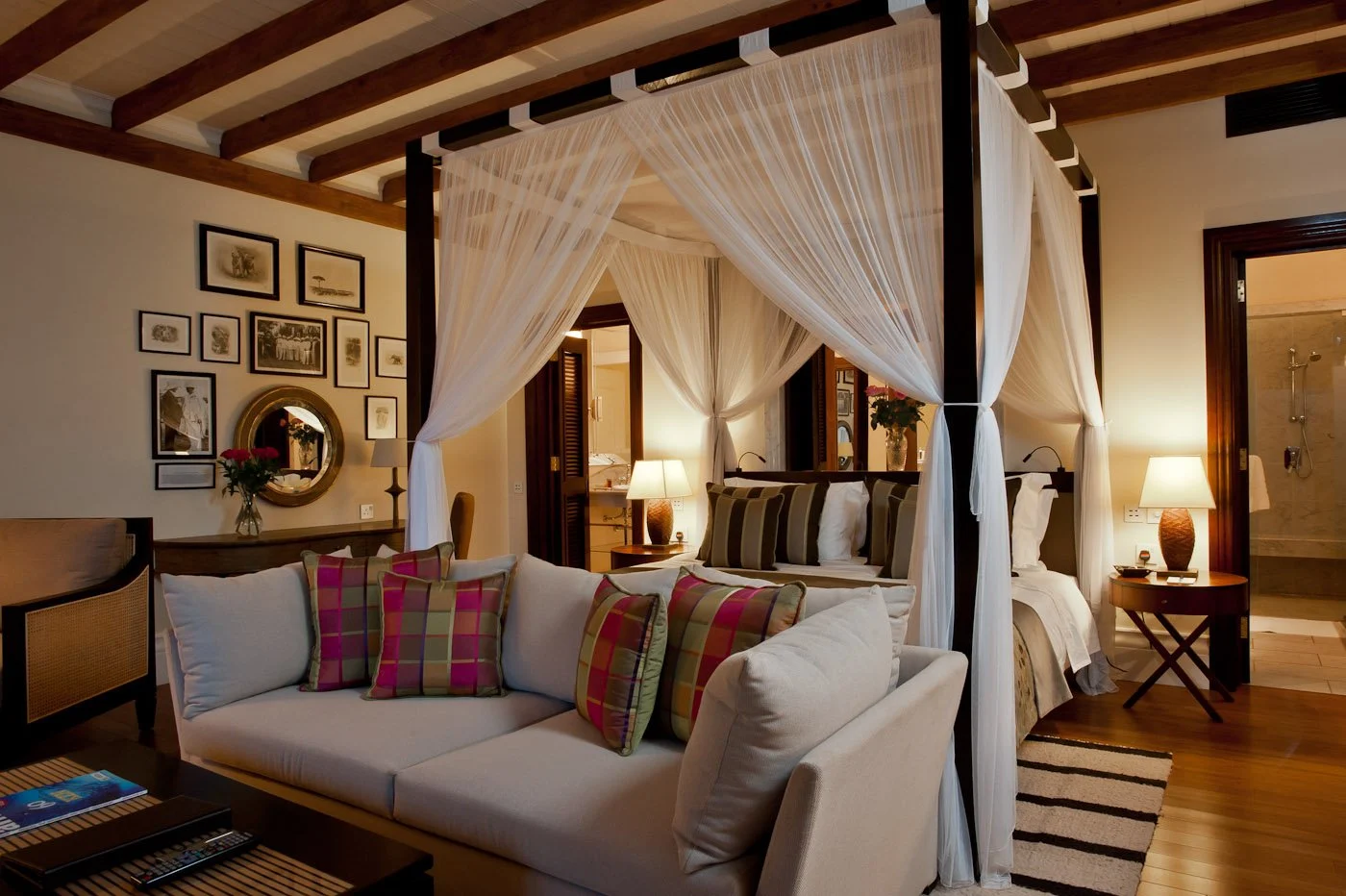
Image courtesy of Hemingways Nairobi
What to do in Nairobi
Visit orphaned elephants at the David Sheldrick Wildlife Trust, which rescues and rehabilitates elephants while championing wildlife conservation. At the Giraffe Centre, founded by the nonprofit organization African Fund for Endangered Wildlife, is a little outside of the city. The center cares for 10 endangered Rothschild giraffes, which you can feed by hand.
The Kenyan capital is brimming with beautiful local art. Watch artisans make gorgeous glassware at Kitengela Hot Glass. Visit Kazuri Beads for handmade beads and pottery crafted by talented women. You’ll find additional local shops, plus bigger brands, at Village Market, which is essentially a shopping mall. For upcycled artwork, Ocean Sole is a must. Take a free workshop tour to discover how the organization turns discarded flip-flops into colorful pieces of art — all while promoting environmental conservation.
Speaking of the environment, wander among the over 350 exotic and indigenous plants at the Nairobi Arboretum. History lovers should head straight to the Nairobi National Museum, whose exhibitions celebrate East African heritage and history. Another notable museum is the Karen Blixen Museum, located within the author’s home amid a serene natural expanse. (Blixen penned Out of Africa, which was eventually made into a movie starring Meryl Streep and Robert Redford.)
Where to Eat & Drink in Nairobi
Nairobi Street Kitchen is a collection of numerous food vendors, selling everything from Indian street food to cocktails accompanied by live local bands. The farm-to-table Cultiva Kenya serves intentional meals brimming with organic heirloom ingredients. You’ll love the hip Wine Box Cave à Manger for libations and snacks, and the lively Beer Room for craft beer and comfort bar classics. Go to Le Grenier à Pain for French fare made from local ingredients and a local team. About Thyme is a whimsical spot surrounded by gardens and greenery, perfect for a romantic meal. Hemingways Brasserie, at the posh Hemingways hotel, is a must for a refined, elegant dinner with good company, and the Talisman Restaurant, serves a diverse menu featuring produce from their on-site organic gardens.
Where to Stay in Nairobi
Hemingways Nairobi: A European-chic aesthetic and exceptional hospitality make this tranquil, sprawling property worthy of any bucket list. Fora’s VIP partner perks include a complimentary 50-minute massage, breakfast daily, an upgrade & extended check-in/out whenever possible.
Fairmont The Norfolk: Clean elegance on Nairobi’s Harry Thuku Road. Fora’s Accor Preferred by HERA partner perks include $100 food / beverage credit, breakfast daily, an upgrade & late check-out whenever possible.
Tribe Hotel: A stylish boutique stay that celebrates all things local. Fora Perks include breakfast daily, an upgrade & extended check-in/out whenever possible.
Giraffe Manor: An ivy-covered historic manor with its own herd of wild giraffes.
The Rift Valley
Kenya’s vast Rift Valley is an impressive natural expanse, filled with wildlife, lakes and legendary nature reserves, including the Maasai Mara.
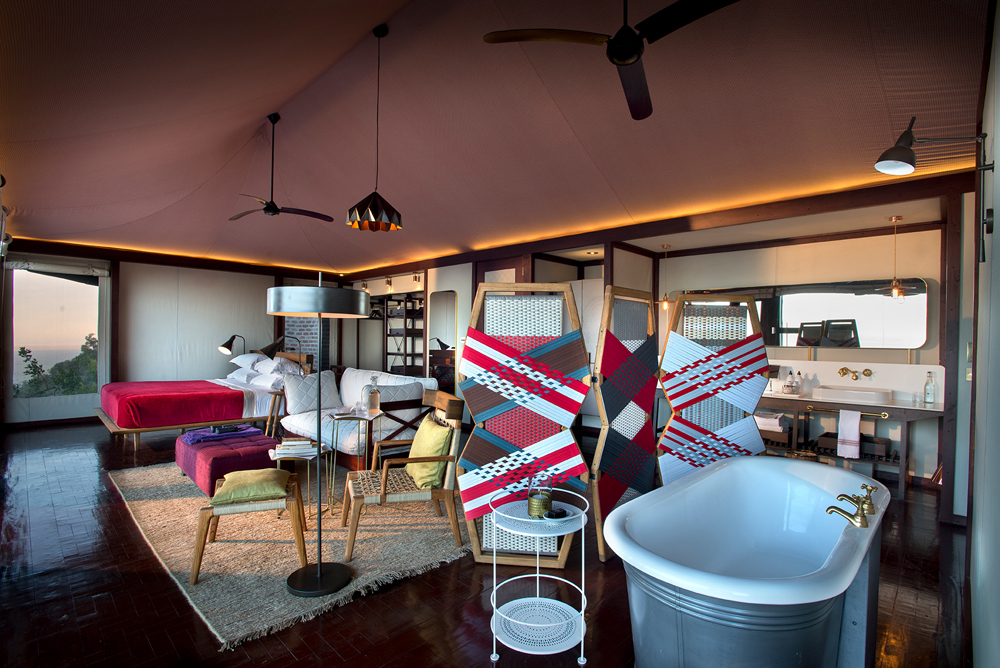
Image courtesy of Angama Mara
What to do in the Rift Valley
The Rift Valley Region is a veritable natural wonder. Going on safari in the region’s Maasai Mara National Reserve, especially during the Great Migration, is a must. Game drives and hot air balloon rides await. Also consider visiting a Maasai village, whose residents, clad in vibrant red and blue, are some of the kindest people you’ll meet.
Hikes abound in this ancient locale. Go hiking, rock climbing and cycling in Hell’s Gate National Park, home to extinct volcanoes and tons of wildlife. A little north is Lake Naivasha, the ideal place to spot hippos and various bird species. Another lake to see is Lake Nakuru, known for its impressive flamingo population. Lake Nakuru National Park at large also merits a visit; in addition to the aforementioned flamingos, you’ll likely see zebras, giraffes, rhinos and more. Hike up Mount Longonot, an extinct volcano, for panoramic valley views. Also check out Menengai Crater, Kenya’s largest caldera.
Enjoy a picnic near the stunning Thompson Falls Nyahururu. For another lake moment, consider visiting the alkaline Lake Bogoria and its numerous springs and geysers, or Lake Baringo, home to crocodiles and hippos.
Where to stay in the Rift Valley
Angama Mara: A bucket-list-worthy hideaway with jaw-dropping views, meticulously sourced food, magical evenings and the kindest, most incredible staff.
Sanctuary Olonana: A dreamy riverside retreat with 15 glass-walled suites, meals made from organic homegrown produce, an outdoor gym and a swimming pool surrounded by nature.
Loirien Mara: Three exquisite villas in the heart of the Maasai Mara. Expect gourmet meals paired with fine wines and cocktails, a heavenly spa and sauna, hands-on cooking experiences and enriching activities.
Mahali Mzuri: A 12-tent camp in the Maasai Mara, part of Sir Richard Branson’s Virgin empire. Fora’s partner perks include $100 gift shop or spa credit, breakfast daily, an upgrade & extended check-in/out whenever possible.
andBeyond Bateleur Camp: Glamorous and intimate, with two separate camps each consisting of nine gorgeous tents. Book with Fora to unlock daily breakfast daily, an upgrade & extended check-in/out whenever possible
Olare Mara Kempinski Masai Mara: 12 luxury tents located in the property’s private conservatory. Fora’s Kempinski Club 1897 perks include hotel credit, a welcome note, breakfast daily, an upgrade & extended check-in/out whenever possible.
Elewana Sand River Masai Mara: A rustic-luxe escape committed to sustainable tourism, complete with 16 tents in a secluded nook of the Maasai Mara.
Fairmont Mara Safari Club: A five-star stay at the base of the Aitong Hills. Fora’s Accor Preferred by HERA partner perks include a complimentary 50-minute massage for two, breakfast daily, an upgrade & extended check-in/out whenever possible.
Central Kenya
Kenya’s lush central region is where you’ll find Mount Kenya, an extinct volcano and Africa’s second-highest peak, in addition to some of the country’s richest nature reserves.
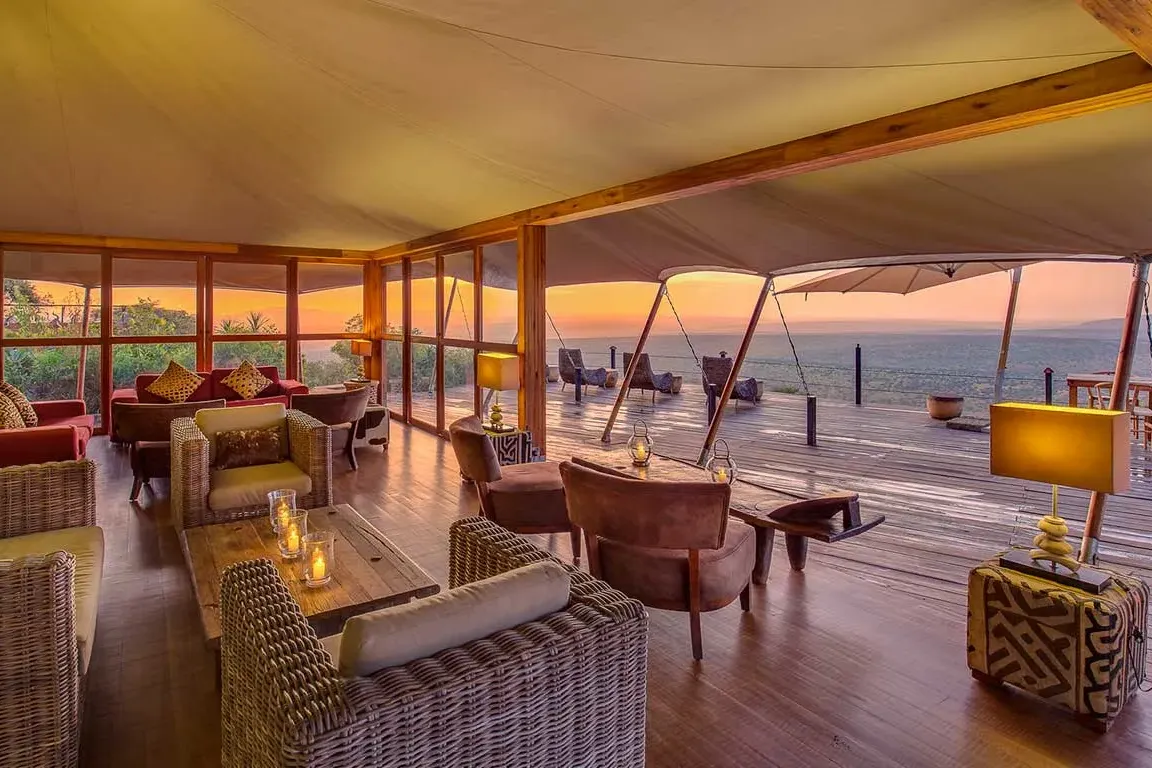
Image courtesy of Elewana Loisaba Tented Camp
What to do in central Kenya
Central Kenya is ideal for the physically inclined among us. Explore the hiking trails on Mount Kenya, Africa's second-highest peak. For indoor climbing, scale the climbing walls at Mt Kenya Climbing Gym, at the base of its namesake. Ngare Ndare Forest is perfect for walks amid natural pools and trails filled with wildlife. The Ol Pejeta Conservancy is home to the last two northern white rhinos, and conservancies like the private Lewa Wildlife Conservancy and the nonprofit Borana Conservancy make for particularly special game-drive experiences. Save the Rhino’s anti-poaching canine unit experiences are also a must. The company is committed to protecting rhinos, reducing illegal trade and community involvement, and their canine units are one way they work toward this mission. The trained dogs can detect poachers’ scents and illegal wildlife products in cars and homes.
The lesser-known Mwea National Reserve is just as impressive as some of its more popular counterparts. If you love waterfalls, you’ll especially love Chania Falls, on the Nyeri highway; the thundering Fourteen Falls, located on the Athi River; and the three-tiered Karuru Falls.
Where to stay in central Kenya
Fairmont Mount Kenya Safari Club: An elegant property with a clubhouse feel on 100 acres of greenery. Fora’s Accor Preferred by HERA partner perks include $100 property credit, breakfast daily, an upgrade & extended check-in/out whenever possible.
Segera Retreat: Intimate and luxurious, with 50,000 private acres to explore. The focus here is on conservation, culture and community.
Solio Lodge: The only lodge within the 45,000-acre Solio Game Reserve, home one of East Africa’s most successful rhino-breeding operations.
Elewana Loisaba Tented Camp: A luxe retreat on the edge of an encampment. The property works closely with local communities and is also a working cattle farm. Fora Perks include a visit to the Loisaba Conservancy headquarters, an upgrade & extended check-in/out whenever possible.
Elewana Loisaba Starbeds: A rugged kopje, or small hill, is the home of this beautifully rustic retreat, where thatch-roofed accommodations sit on raised wooden platforms.
Sanctuary Tambarare: Eco-luxury near Mount Kenya, in the Ol Pejeta Conservancy. The lodge consists of a mere 10 tens, plus a villa, all outfitted with Maasai art, teak floors and private verandas.
Ol Jogi: An 11-bedroom private home spread across eight cottages. The property takes one guest group at a time, and you’ll feel as though you have the entire 58,000-acre Ol Jogi Conservancy to yourself.
Coastal region
This multicultural stretch of coastline overlooks the Indian Ocean. There’s history, local towns, beautiful beaches and world-class undersea exploration.
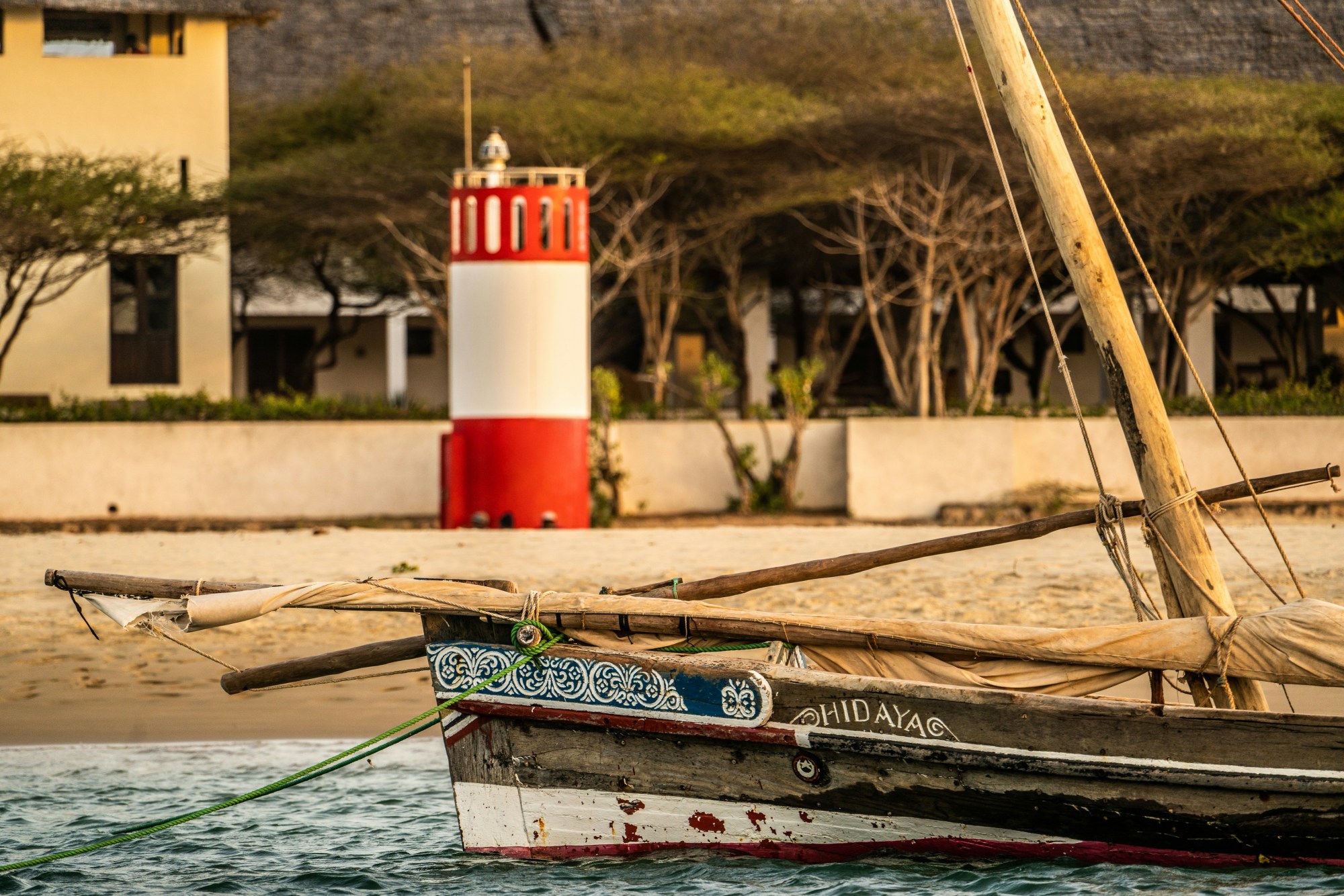
Lamu, Kenya
What to do in the coastal region
In Mombasa, the former capital of British East Africa, you’ll find the old city and its winding streets and ornate balconies. The city is home to Fort Jesus, which was built by the Portuguese and is now a museum and UNESCO-World Heritage Site. The city’s beaches are prime, as are its underwater playgrounds primed for snorkeling and diving.
Lamu Island sits just off the coast. Lamu, a small town on the island, is an impressively well-preserved Swahili settlement. There are five museums in Lamu’s Old Town, one of which is the Lamu Museum, which boasts an expansive collection of Swahili artifacts, from clothing and jewelry to furniture, archaeological finds and musical instruments. About 30 minutes away by boat are the Takwa ruins, the remnants of a Swahili trading town from the 15th and 16th centuries.
Where to eat in the coastal region
Dine on French, Asian and African food at Tamarind Restaurant, which overlooks Mombasa’s historic harbor. The casual Cafesserie serves Italian coffee, French baked goods and café favorites, while Roberto’s Italian Restaurant features wood-oven pizza and housemade pastas.
For an especially unique experience, opt for dinner at Ali Barbour’s Cave Restaurant, which is, quite literally, located in a cave that’s hundreds of thousands of years old. You’ll love Kokkos Cafe Bistro for a hearty breakfast or lunch, and the charming Whispers Cafe for a low-key bite.
Where to stay in the coastal region
Hemingways Watamu: Beachfront luxury in Watamu Marine National Park, from the team behind the stunning Hemingways Nairobi. The airy, breezy rooms will immediately put you at ease.
Safari
Fora has numerous on-the-ground safari partners in Kenya. Where you stay and go will largely depend on your itinerary and what you want to see. You’ll likely visit numerous lodges — allow time for at least three nights per lodge to really get the most out of each region.
This may be information overload, but that's where I come in. Above is just a taste of all that Kenya offers. Connect with me for a tailored trip. I'll work to understand your vibe and what you're after, and design your dream Kenya getaway, complete with VIP perks and priority status at the country's best hotels.
